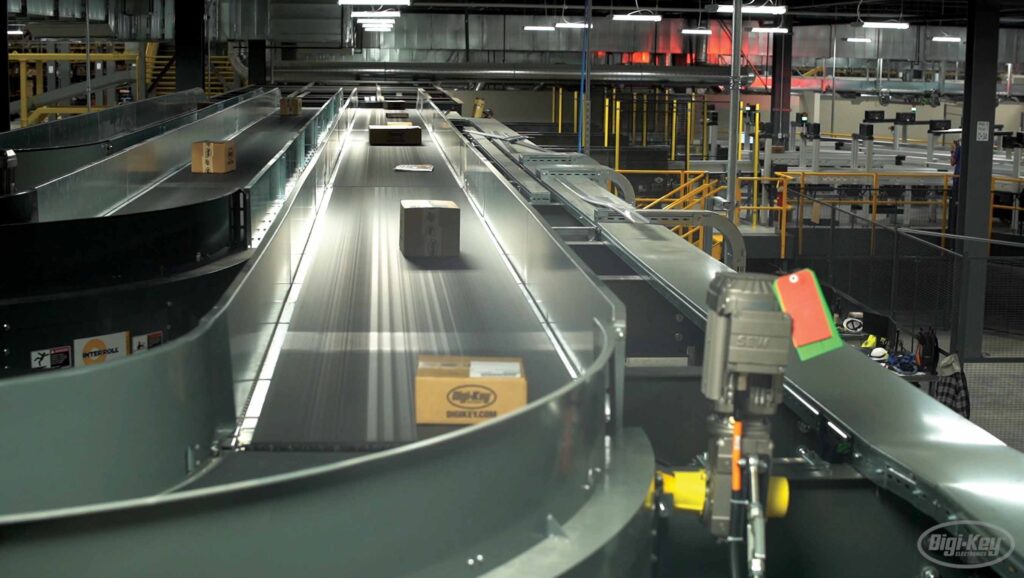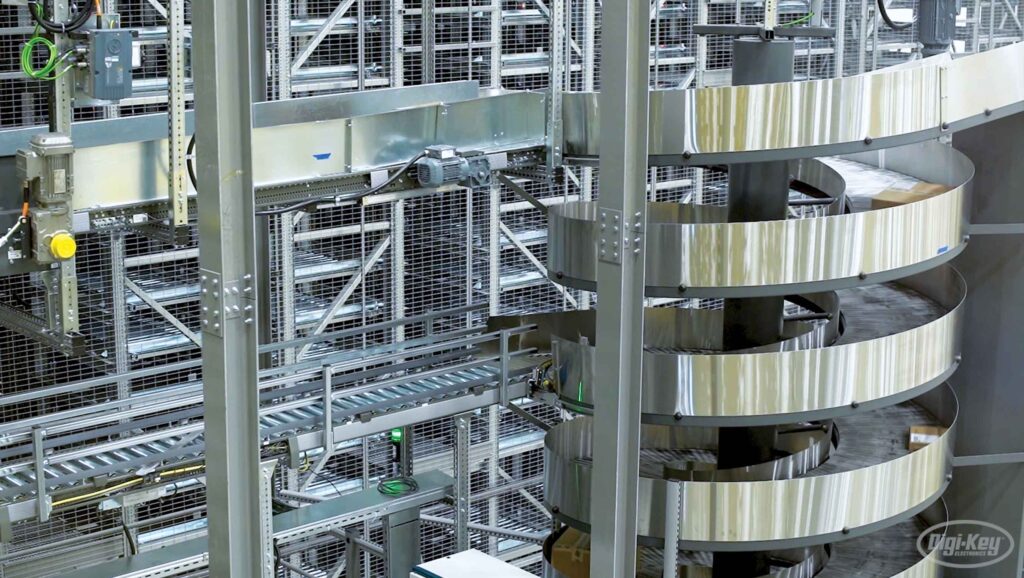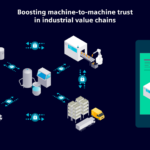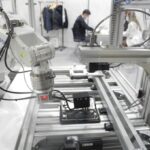ASIA ELECTRONICS INDUSTRYYOUR WINDOW TO SMART MANUFACTURING
IIoT Paves Way for Factory of the Future
Manufacturing facilities around the world continue to strive for smarter, safer, and more efficient manufacturing operations. They utilize advanced automation to transform the factory of tomorrow and create a higher level of consistency and reliability in products. Accelerated by the COVID-19 pandemic, demand for more automated and innovative Industrial Internet of Things (IIoT) solutions has resulted in a cultural shift among manufacturers leading towards faster adoption of new technologies.
IIoT enables smarter, more predictive and proactive processes that can improve effiencies and create safer work environments – and ultimately, better, more reliable products. From smart sensors to smart edge devices and cloud infrastructure, the impact that IIoT, also known as Industry 4.0, has had on the manufacturing industry cannot be understated.

Here are some of the cutting-edge technologies that are revolutionizing Industry 4.0.
Collaborative Robots
Although there may have been some past concern that robots or automation could eliminate human jobs, that is no longer the case. As a society, we’ve realized the immense benefits to be gained. It is generally accepted that robots that work in tandem with humans – collaborative robots (co-bots) – have huge potential for keeping workers safe and happy.

Reassigning tedious, repetitive or potentially dangerous tasks to a robot can shift the average manufacturing position to one that is more decision-based than task-oriented. Humans can take on projects that require making judgments, critical thinking or creativity, leaving heavy lifting and less engaging work to robotics – therefore improving safety.
Additionally, while these cobots are very complex machines, they often do not require a background in computer science to learn how to re-program them to do more than one task. General-purpose robots with computer vision are much more common now, and have the ability to adapt to different environments and quickly be re-programmed to serve more than one function.
Overall, this is improving morale, reducing stress and increasing job satisfaction amongs workers – something that is hugely important at a time when labor is extremely tight. Human workers being assisted by robots will also be safer, with fewer injuries, accidents, and repetitive stress-type injuries.

Robotics as a Service
Robotics as a service (RaaS) is a rapidly growing trend that is advancing the use of robotics in smaller factories – it has been said that automation is the great equalizer among manufacturers.
Like software as a service (SaaS), manufacturers using RaaS can lease robotic devices and access a cloud-based subscription service rather than making an expensive investment in equipment; receiving the benefits of robotic process automation without the costly expense.
With RaaS, manufacturers do not need to pay for an expensive piece of equipment, handle maintenance and deal with other headaches of full ownership. Manufacturers can simply contact a company that supplies RaaS and have them set up the entire system at a fraction of the purchase price and owning their own robotic devices. There is very little that cannot be automated, so it is typically a matter of if the cost to automate will be prohibitive to doing the automation — which in many cases now is not.
Another current RaaS trend is called the digital twin, where a factory or production cell is recreated in a virtual environment using the specifications of exact products, or in some cases, having the system dictate with products should be used. Users can simulate manufacturing an item in a digital environment in order to identify ways to optimize the placement of machines and optimize material flow.
Digital twins can also alert factory operators and managers to issues with equipment, such as when a motor may give out, or when they should expect to perform maintenance. Running the digital twins can answer many problems before they happen.
RaaS providers will often create the digital twin for customers helping them figure out the necessary processes to accomplish the company’s goals.
Computing at the Edge
The factory of the future will be outfitted with a huge number of sensors, which gather an immense amount of data. It is both slower and more costly to communicate that data back to the cloud than it is to process it closer to the source – at the edge.
Edge computing greatly increases data efficiency. Not every bit of data that is captured needs to be stored or sent to the cloud for further analysis — much of the analysis can be done at the point of data collection. Image detection and identification is a good example – cameras, especially HD ones, generate a ton of data. It is more efficient to run image detection and identification software in the camera and only send up data in the case of an anomaly or exception. Edge computing is distributed computing, and as such needs greater monitoring and maintenance. This additional upkeep is a worthwhile trade-off for applications that generate a lot of data or ones that require a fast response.
New connectivity options like Long Range Wide Area Networks (LoRaWAN) are enabling edge computing at a much faster rate in the manufacturing industry, making it an effective and efficient connectivity option for data analysis in factories.
An edge solution is best suited for applications that require high-bandwidth (large amount of data) and fast response times. The response time required by robots does not allow for data to be sent to the cloud for analysis before sending commands back. Compute and control must be done rapidly at the source. Use of edge computing in these high-bandwidth and fast response applications will reduce the burden on the rest of the network.
Unlocking Potential with AI
Machine-to-machine communication through wireless connectivity can now communicate with edge computers to provide analysis of processes. Through machine learning, changes can be made with minimal programming, allowing factories to continuously adjust their processes and increase efficiency.
Artificial intelligence (AI) applications can unlock the true potential of IoT and edge applications across manufacturing and factory floor. By using real-time analytics, connected sensors, predictive maintenance, supply chain automation, and other process advancements, the manufacturing industry is quickly being propelled forward into a new era.
Digi-Key is also leveraging this technology to stock its shelves to automate the world’s largest selection of electronics components and facilitate their signature shipping speeds, too.
The Future Digi-Key Factory
Digi-Key’s brand new, state-of-the-art distribution facility, the new Product Distribution Center Expansion (PDCe) in the U.S., is a prime example of a factory of the future. It is one of the largest distribution facilities in the world at 92,903 square meters. The PDCe will house all of Digi-Key’s order fulfillment operations, including picking, packing and shipping, as well as the receiving of product and overflow pallet storage.
The built-in technology in this facility will allow Digi-Key to be on the leading edge of distribution for years to come. The PDCe will be home to more than 43 kilometers of high-speed, automated conveyor belt that will allow for the brains of the operation – the Order Storage Retrieval or OSR system – to automatically retrieve product and prepare orders to be packed. The OSR supports a goods-to-person fulfillment order using 1,000 automated shuttles that can move throughout the OSR and store more than 2 million unique parts.

This intelligent, automated system will allow for orders to be picked, packed and shipped much faster, and eliminate wasteful packaging with orders being shipped in multiple boxes. It will also free up warehouse workers to take on new responsibilities, as well as increase their safety and eliminate a significant amount of manual labor.

A Flexible Future
One area that has a large amount of potential is in flexible manufacturing. In the coming years, the increased number of robots and other technologies could make mass customization and lot sizes of one a reality. Rather than a factory being dedicated to making a million of one item, a more local factory could perhaps be dedicated to making items that fit exact customer needs.
For example, a customer could upload a photo or 3D model of themselves to a nearby factory via the cloud, which a robot could use to manufacture a jacket from start to finish that fits their exact measurements. The jacket may then arrive back to the customer in just a day or two because it does not need to travel very far – a significant improvement on the current model of mass production where orders are often shipped overseas several times before reaching the customer.
This would help eliminate or reduce some of the wasteful aspects of manufacturing across the entire supply chain – discarded resources, lengthy shipping routes and returns, for instance — making the entire process more individualized and less resource intensive. Even giant factory buildings could fade away in the near future as factories become smaller, more flexible and localized, with robots learning and adapting as they go.
Where we are currently with the intersection of robotics and artificial intelligence is just the beginning: it’s like the invention of the wheel. Over the course of the next 10 years, manufacturing, as we know it, will be completely different, due in large part to the digital transformation of Industry 4.0, benefitting everyone from employees to customers to the environment.
About This Article:
Robbie Paul is Director of IoT business development for Digi-Key Electronics, which recently produced a Future Factories video series that can viewed at https://www.digikey.jp/ja/resources/iot-resource-center/future-factories.




